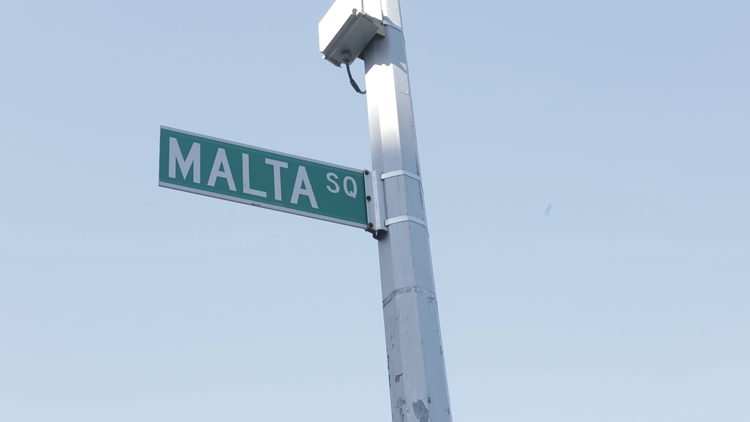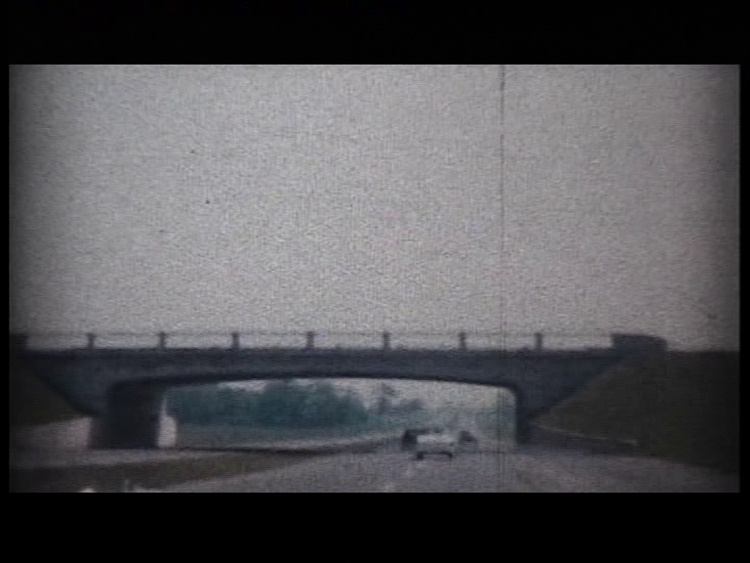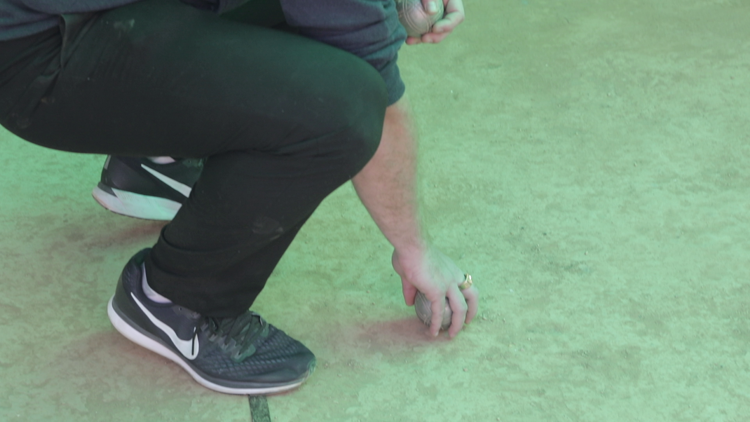
SEMPRE VIVA: A NEW SITE-SPECIFIC WORK BY ARTIST AND FILMMAKER CHARLIE CAUCHI
Eve Cocks: This year seems to have been an important year for you. You’ve had your debut of your documentary short From Malta to Motor City, a solo show at BLITZ, as well as other collaborative projects with international performance artists, and now… SEMPRE VIVA. How does SEMPRE VIVA tie up to these projects and collaborations?
Charlie Cauchi: All my work, including SEMPRE VIVA, forms part of LATITUDE 36, which is a project that I’ve conceived and been working on for the past three years thanks to the Valletta 2018 Foundation, who supported the whole project. LATITUDE 36 gave me the possibility to make various pieces of work on the subject of the Maltese diaspora, some of which I exhibited during my solo exhibition at BLITZ including a series of artworks, ranging from photography and soundscapes, to built structures and moving image, which looked at stories of the diaspora in Australia, Tunisia and London.
LATITUDE 36 also comprised works by artists like Sh!t Theatre, Nick Cassenbaum, Rosana Cade, and Foxy & Husk. All of their work more or less also reflected on the idea of the diaspora, of being away from home. Sh!t Theatre and Foxy & Husk made brand new works about Maltese diaspora whereas Rosana and Nick brought existing works that reflected on issues of identity, migration and belonging. The stand-alone documentary short called From Malta to Motor City looked at the Maltese who had moved to Michigan to work for the so-called Big Three – General Motors, Ford, and Chrysler. For this documentary I mainly looked at clubs, or rather two clubs which are very much like the Każini that we have here in Malta. I focused on the people that inhabit these spaces and how they’ve kept their “Malteseness” going even if it’s slightly ‘altered’.


EC: What triggered your interest in the Maltese diaspora?
CC: I was born in London to Maltese parents and growing up as a child I was always fascinated by the Maltese community there. I went to school with mixed nationalities and found myself to be the only Maltese kid within the whole school. On weekends, my father and I would go visit his friends who were all Maltese and who spoke Maltese most of the time. Sometimes we would also go to one of the clubs to buy pastizzi. We used to visit Malta regularly too, around 3 times a year. I moved to Malta when I was 12 and left when I was 24, and here I am again today. So I’ve lived in both countries for equal amounts of time and have always felt this kind of division in myself: Am I English? Am I Maltese? Which am I? Issues related to Brexit have also made me reflect upon these questions of identity and belonging.
Another starting point for me was when my mother died at the very beginning of the project. Her death made me realize that there were so many questions that I wanted to ask about our histories. So when she died I began thinking that I really wanted to rectify this, so I started talking to people, asking them about their stories. Some of the people that I’ve interviewed during this 3 year project actually died. I’m glad I heard their stories and that I am able to share their histories with others.


EC: We haven’t yet spoken about SEMPRE VIVA…
CC: SEMPRE VIVA is a three-screen video installation that has been commissioned by the Ministry of Foreign Affairs and Trade Promotion of the Republic of Malta. For this piece I used a lot of the footage that I shot over the past 3 years as part of LATITUDE 36. The projection features snippets of conversations which I recorded when I travelled to the UK, Canada, America and Tunisia. I Interviewed various Maltese people living there – either community groups or individuals of all generations – so they didn’t necessarily have to be the ones that had migrated. I wanted to learn about their lives. I asked them a lot of questions that had to do with Maltese national identity, and what that even means to them. We also talked about how they ended up where they were, and what their journey was like, as well as if they were the children of Maltese migrants and how being Maltese impacted their lives. In a nutshell, SEMPRE VIVA is an hour long installation with snippets of these conversations. I also mixed a lot of archival material, including home footage.
EC: Why did you choose SEMPRE VIVA as a title?
CC: There’s a flower called ‘sempreviva ta’ Ghawdex’ (Sempreviva of Gozo), so it is indigenous to the country. I chose that as a metaphor for the whole piece itself, as it brings about ideas of Malta. Its English translation is ‘The Maltese Everlasting’. There’s something unique and impenetrable about it.


EC: To experience SEMPRE VIVA one has to enter a space which was specifically designed for it.
CC: We built a large, wooden cube, which actually acts as a gallery space within the Ministry of Foreign Affairs itself, the outside of which is all made of mirror. The reason behind this is to make the viewer reflect upon the idea of identity, to reflect not just on the subject but on ourselves and to perhaps pose the question “who we are?” However, even though the box is important and is part of the installation, the film itself can be shown regardless. I also would love to screen it in places that we visited themselves, as well as the documentary short. It is an important aim of mine to look into ways of getting all this back to the people who are part of this project.
EC: To whom are you referring to when you say “we”? Are there any other artists involved?
CC: Jon Banthorpe was very much involved in the design aspect of the actual physical box, as well as the build. I really don’t think I could have made this without him. Along with Jon, I’ve also been working with Sandra Zaffarese and Tom Van Malderen, who’ve helped enormously in the production of this installation. All three are artists in their own right and their experience, attention to detail and insight was invaluable. The installation also comes with a booklet which has several photographs taken by Ali Tollervey, who did a lot of the filming for this piece, and Sebastian Tanti Burlo, who took some photographs in the USA and Canada. Jon also photographed Tunisia. With regards to the video work, I worked closely with editor Claire Nolan, Martin Bonnici, Yasmin Kuymizakis and Jimmy Bartolo.

EC: Is it correct to say that SEMPRE VIVA sums up or brings to an end the LATITUDE 36 project?
CC: Well, in a sense it is kind of closing LATITUDE 36, but part of me feels that the project does not end here as there’s much more left to discover. There are many countries which I haven’t yet visited and I also have loads of footage that still needs to be edited. My only question now is how to keep the project going. It would be great to make new work out of the existing material I’ve gathered or add to that work by going to places like Corfu, Marseille, Algeria or Egypt, places that have a lot of ties to the Maltese diaspora, whether it is existing or has passed. So yes, SEMPRE VIVA could be seen as the end to the project as it also coincides with the closing of Valletta 2018, but I am confident that it is also the start to more.
SEMPRE VIVA will run between the 10th and 15th December at the Ministry of Foreign Affairs and Trade Promotion, Valletta. For further info visit https://www.facebook.com/events/209792853268792/
FILM STILLS courtesy of ALI TOLLERVEY & CHARLIE CAUCHI
PHOTO (SHOWING ARTIST & FILMMAKER CHARLIE CAUCHI) by ALEXANDRA PACE
ACKNOWLEDGEMENT SARAH CHIRCOP
Charlie Cauchi is a published researcher, producer, artist and filmmaker. Her current work (LATITUDE 36) forms part of the Valletta 2018 Foundation’s European Capital of Culture programme. She curated BornShorts Short Film Festival from 2012 to 2014 on the island of Bornholm, Denmark. Charlie has produced three short films: Imaginarium (Pedro Resende, 2013), supported by Arte Creative; The Distant Sea (Nic Wassell, 2016), funded by Southwark Film Fund and Film London, as part of London Calling; and From Malta to Motor City (Charlie Cauchi, 2018). Charlie is currently producing Stephanie Sant’s film Perpetual Child, supported by the Malta Film Fund. She holds both a BA and MA in Film Studies and is doctoral candidate within the School of Languages, Linguistics and Film at Queen Mary University of London. Her published work includes: ‘Descending the Staircase: From Purity to Perversion and Nowhere In Between’, Homo.Melitensis: Malta Pavilion (Mousse Publishing: Biennale Art, 2017); World Film Locations: Malta (Intellect, 2015); ””A Significant Cultural Industry”: Mapping Audio-visual Education on the island of Malta,’ in The Education of the Filmmaker in Europe, Australia and Asia (Palgrave Macmillan, 2013); ‘Cinema in Malta or Maltese Cinema? Politics and Identity on Screen from Independence to EU Accession’, European Visions: Small Cinemas in Transition (Columbia University Press, 2015).
